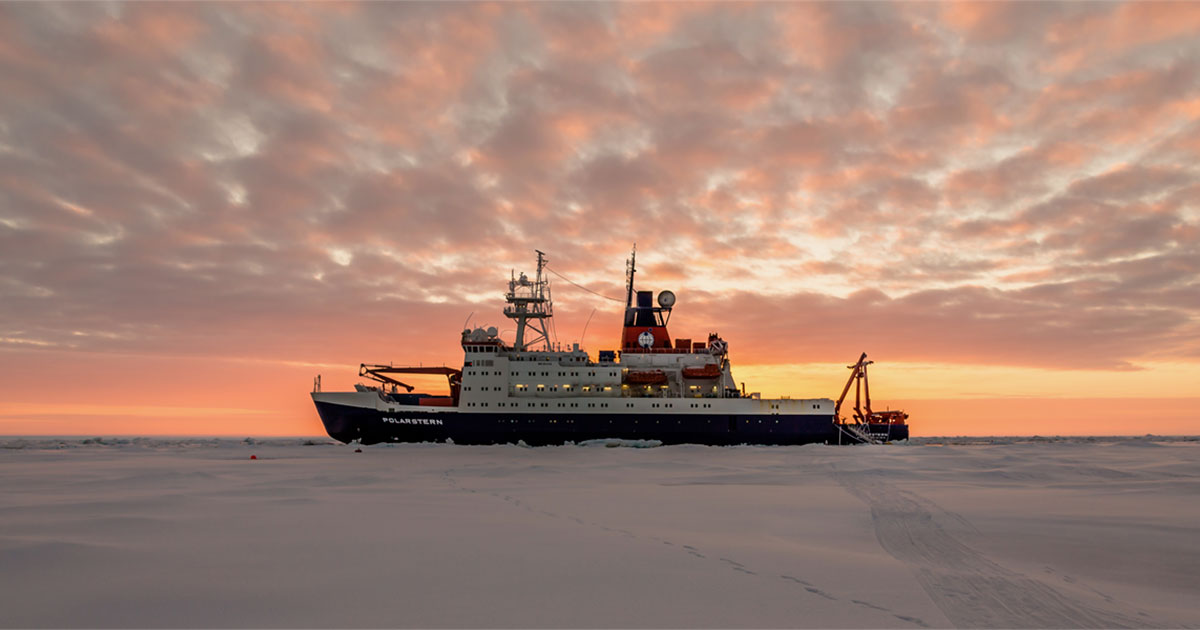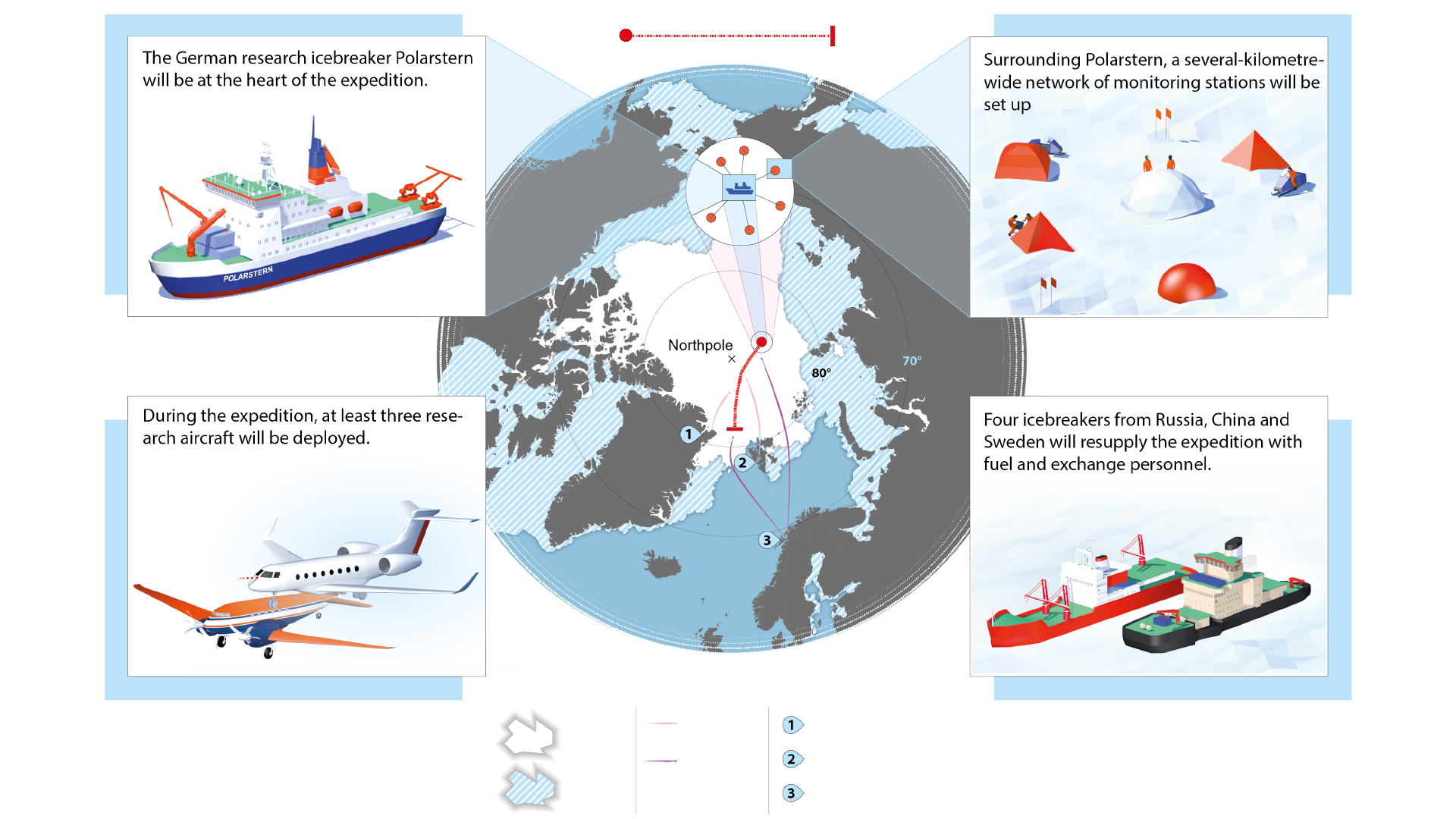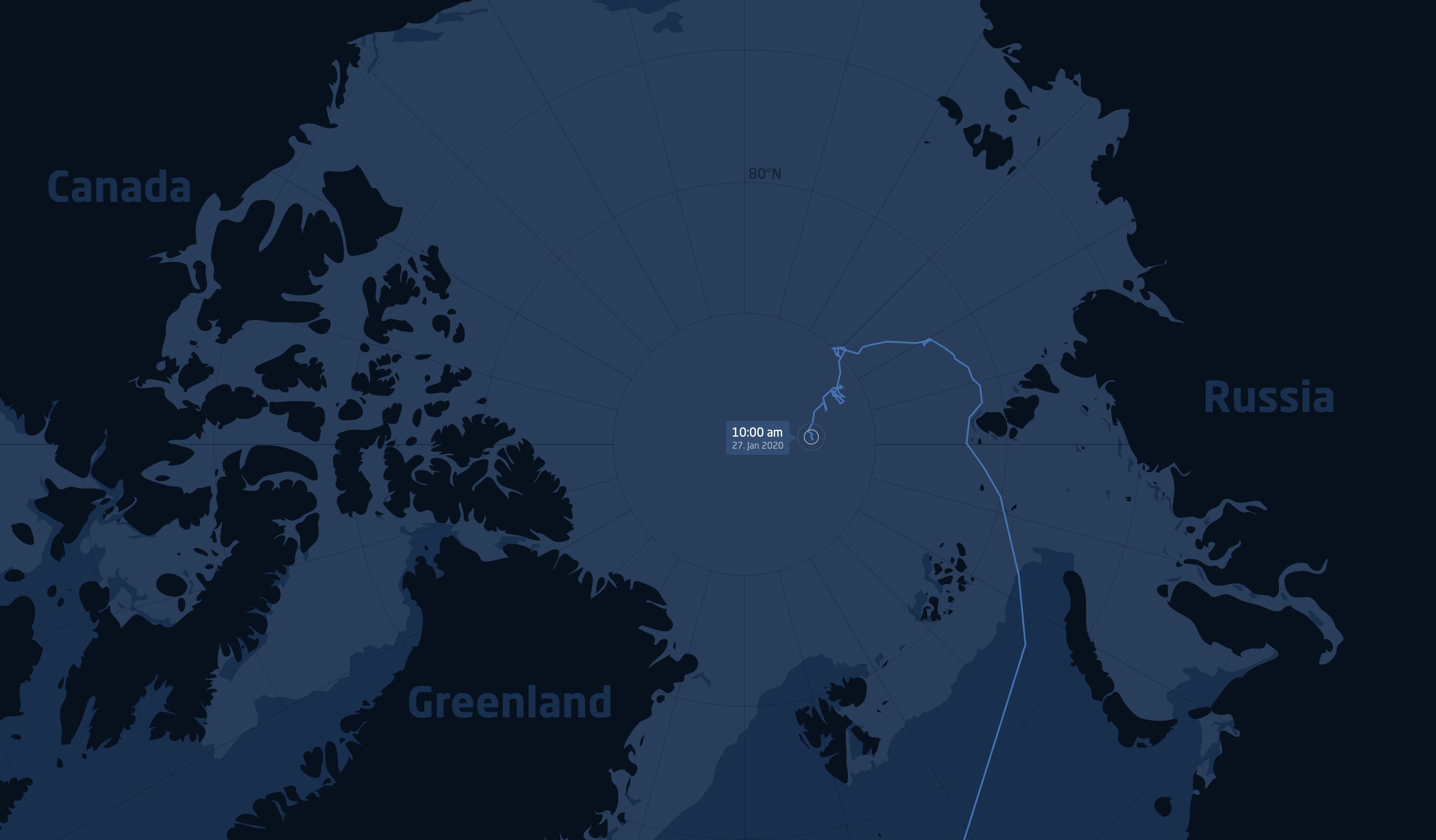The MOSAiC Expedition Continues: Hardships and Challenges in the Arctic Winter

At the end of January 2020, a Russian icebreaker left the Norwegian city of Tromsø for the German research vessel Polarstern, which sits frozen in the Arctic Ocean. Researchers from Wageningen University and Research and the University of Groningen will be on board and will carry out research on the Polarstern. With this Mosaic expedition, the Netherlands is participating in a total of three projects, which are funded by NWO.
The first leg of the MOSAiC expedition was completed in the middle of December 2019. Crew members and scientist of the second leg are on board now and working hard to continue the work after celebrating Christmas and New Year’s Eve on board together. Leg 2 is the darkest and coldest one of them all.
 At the end of January, Polarstern, from the Alfred Wegener Institute, was about 300 kilometers on the Russian side of the geographical North Pole. It is hypothesized that at the end of summer 2020 the ship will lie somewhere between Greenland and Iceland as a result of sea currents, and that it will be released from the ice.
At the end of January, Polarstern, from the Alfred Wegener Institute, was about 300 kilometers on the Russian side of the geographical North Pole. It is hypothesized that at the end of summer 2020 the ship will lie somewhere between Greenland and Iceland as a result of sea currents, and that it will be released from the ice.
For most of January 2020, the Polarstern was farther away from civilization than the International Space Station, which orbits at an altitude of ~400 km (~250 miles) above the Earth's surface.
ICEFLUX colleague currently on board
 On board is AWI (Alfred Wegener Institute) colleague Giulia Castellani. As a physicist, she has been working in the joint Wageningen Marine Research and AWI ICEFLUX projects for many years. In these projects she has been investigating the properties of sea ice in the polar oceans and the link of these properties with the in-ice and under-ice ecosystems. During previous Polarstern expeditions AWI and Wageningen Marine Research conducted together (including last year’s Antarctic expedition PS117, Castellani collected data on sea-ice properties using sensors on both the ice and on the SUIT (Surface and Under Ice Trawl). She also worked as a biologist, processing the catch collected using various types of fishing gear. These skills will come in handy as she is currently working on collecting zooplankton and fish samples in the Arctic region during the second leg of the MOSAiC expedition.
On board is AWI (Alfred Wegener Institute) colleague Giulia Castellani. As a physicist, she has been working in the joint Wageningen Marine Research and AWI ICEFLUX projects for many years. In these projects she has been investigating the properties of sea ice in the polar oceans and the link of these properties with the in-ice and under-ice ecosystems. During previous Polarstern expeditions AWI and Wageningen Marine Research conducted together (including last year’s Antarctic expedition PS117, Castellani collected data on sea-ice properties using sensors on both the ice and on the SUIT (Surface and Under Ice Trawl). She also worked as a biologist, processing the catch collected using various types of fishing gear. These skills will come in handy as she is currently working on collecting zooplankton and fish samples in the Arctic region during the second leg of the MOSAiC expedition.
The participants of leg 2 of the MOSAiC expedition arrived at Polarstern on board the Russian Icebreaker Captain Dranitsyn. Cold conditions do not make the work very easy. To protect it from freezing, sampling gear has to be insulated before going into the water and when coming out. The temperatures often fall below -30°C. Due to the cold, the holes through which different gears are deployed freeze shut and have to be opened up again before the work can start. Despite hardships the people stay positive.
“Experiencing Arctic winter is simply amazing and we all enjoy the work,” says Castellani.
For more information, click here.

